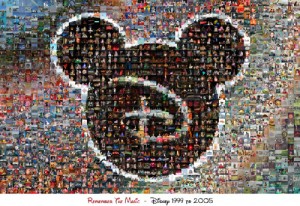 Ok, so by now you have heard of Apple‘s newest gadget, the iPad, and all the jokes that surfaced inspired by its infamous name. You might ask yourself why, why wouldn’t you call it the iSlate or an other name than something that sounds like a feminine hygiene product? Well, the answer probably resides in the other things the word “pad” congers up. A pad is a place you visit to share your ideas, jot down thoughts, it starts blank.
Ok, so by now you have heard of Apple‘s newest gadget, the iPad, and all the jokes that surfaced inspired by its infamous name. You might ask yourself why, why wouldn’t you call it the iSlate or an other name than something that sounds like a feminine hygiene product? Well, the answer probably resides in the other things the word “pad” congers up. A pad is a place you visit to share your ideas, jot down thoughts, it starts blank.
Blank is where your mind probably is right now. You have probably heard all the negative hype that came up because the iPad did not wow the whole “tech world” like the first iPhone did. The tech bloggers largely attacked the iPad for not having a camera (ok they are right about that but there is time for that in the 2.0 version), but the largest reason for the nay sayers remarks was the fact that the iPad is just a large iPhone without the phone part. They are completely wrong.
The iPad is an important move for Apple. It might be the single most revolutionary product they have ever produced, but not because it is a device as an end in and of itself. The iPad is great because it is a platform. The iPad is nothing more than a pretty UX and UI for great content. Yeah there goes that web 2.0 lingo again, but it is. Along with the creation and design of the device came years of negotiation with the publishing industry. The iPad is a platform that will save traditional printed media. Why and what did they need to negotiate you might ask? The answer lays beneath the soon to be buried Amazon (and all it represents), including the ugly passive black and white display called Kindle.
It all dates back to the NBA or Net Book Agreement of 1900 in the U.K. which states that books would be sold at the price specified on the cover. If a bookseller of any kind offered so much as a penny discount, then the publisher would have the right to simply withdraw all of their books from that bookseller. This was the world standard until in 1997 a chink was made in the industry’s armor as courts decided that this practice was nothing more than price fixing, that this was unlawful, and led to the breakdown of a competitive market. Google and Amazon have been chipping away at this hole and now pay on percentages of profits whilst marking the said books down to 60%. Why is all this important?
Well the iPad will be a great machine for you and your business as it can do: spread sheets and or docs on the go, social note taking with evernote, it’s a portable screen/presentation machine, it can be a customer display (think you’re at a bank and can see what the teller is doing realtime via the web), full web access (ok minus flash for now), email, well you get the drift. It does something else too… it will allow media producing companies to make money again. Just like iTunes has saved the music industry, has created a new marketplace for apps, so will it save all printed media. Not only have the publishers started pulling books from Amazon but they have found a solution to the weakened NBA in the iBook store. 
Books are not the only traditional printed media affected by this product and new marketplace, magazines and newspapers are too. Many new ways of viewing content will be merged with the printed media we all are accustomed to in a way that is not static as it is on the web. This will be a new gesture driven interaction directly with the content. Unlike the tech bloggers, if you think publishers are not excited about this prospect you would be dead wrong.

According to Cynopsis Digital, Disney CEO Bob Iger gave analysts a peek at what the company is planning around the iPad during a conference call. He mentioned that native apps are either being developed or adapted around ABC’s Lost, ABC News and ESPN’s SportsCenter app, with digital book applications for Disney and Marvel Comics also in the works. Do you think maybe Apple and Disney are in cahoots? Nah…can’t possibly be. Oh right, Steve Job’s is one of the major shareholders in Disney ’cause he’s head of Pixar. Oh, and Disney owns Pixar. Got it!
Why are we excited and why you should be?
Well aside from the content coup d’etat, in terms of community engagement (social media), content distribution, revenue generation, brand awareness, etc…
Imagine that your brand is exposed to your target audience through an interface that leverages your rich content and the power of what the internet has to offer — while giving the user the experience of what it first felt like when newspapers first came off the printing press…oh yeah it gives a whole new meaning of what an impression is.
-J. Matthew Riva, Creative Maestro, savvy Strategy
Related articles by Zemanta
- The iPad Attempts to Save the Day (ricksrss.com)
- Can Apple’s iPad Save the Media After All? (wired.com)
- A good job for media? (guardian.co.uk)
- Disney’s Iger Takes Big Swig Of iPad Kool-Aid (paidcontent.org)
- The iPad Media Expectations (mondaynote.com)
- Print media hail iPad’s potential (cnn.com)
- The New iTunes for Magazines (Or an Irrelevant Venture) Is Here! (gawker.com)
![Reblog this post [with Zemanta]](http://img.zemanta.com/reblog_e.png?x-id=67cd241d-211c-454d-9735-2af619349946)